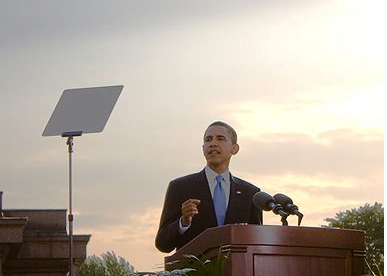It was clear from the outset of his presidency that nuclear non proliferation and disarmament was going to be a key legacy issue for Barack Obama. In April 2009, on his first trip to Europe as President, Obama outlined an ambitious re-posturing of America’s nuclear arsenal. His Prague speech declared as US policy a commitment to a nuclear weapons free world. Since then, the machines of the American foreign policy and defense bureaucracy has been taking steps to fulfill that vision in a process known as the “Nuclear Posture Review.”
There has been a great deal of action on that front.
In his first visit to the United Nations as President, Obama chaired a Security Council meeting on nuclear disarmament–the first time a sitting American president presided over the Security Council. In 2010, the United States and Russia formally entered into an agreement over nuclear arms reductions, known as the New START Treaty. And also in 2010, the USA kicked off a biannual international summit on nuclear security.
Standing before the Brandenburg Gate in Berlin, President Obama built on those policies in new and important ways. The headline grabber: he proposed a further one third reduction in nuclear arms above what was agreed to in New START. Beyond that, he is directing the defense establishment to pro-actively reduce the role that nuclear weapons play in America’s defense strategies.
Via the White House the new guidance:
directs DOD to strengthen non-nuclear capabilities and reduce the role of nuclear weapons in deterring non-nuclear attacks.
directs DOD to examine and reduce the role of launch under attack in contingency planning, recognizing that the potential for a surprise, disarming nuclear attack is exceedingly remote. While the United States will retain a launch under attack capability, DOD will focus planning on the more likely 21st century contingencies.
codifies an alternative approach to hedging against technical or geopolitical risk, which will lead to more effective management of the nuclear weapons stockpile.
The premise of this policy is that America’s greatest threats are not of the kind that can be mitigated through traditional nuclear deterrence, and the USA is safer in the long run when there are fewer nuclear weapons around.
This makes sense, but the fact that we are having this conversation 25 years after the end of the cold war goes to show just how deeply embedded old school nuclear weapons thinking is in America’s foreign policy establishment. Obama is challenging those ideas and premises in a way that future historians will likely regard as a turning point for global nuclear security. This is clearly a legacy issue for the President. But more importantly, it one step toward a safer, nuclear free world.
